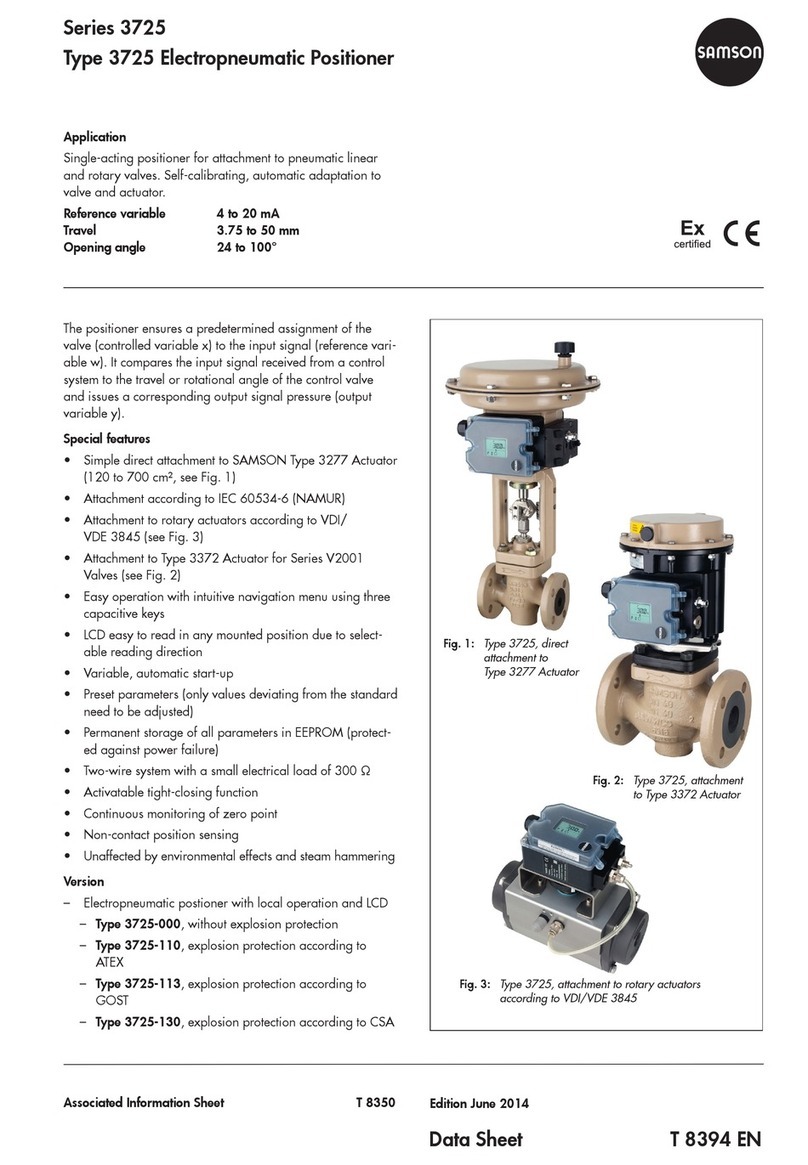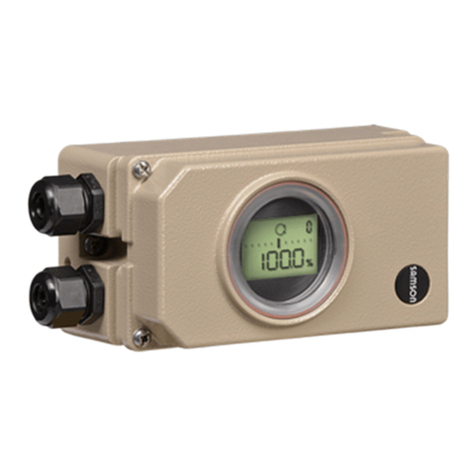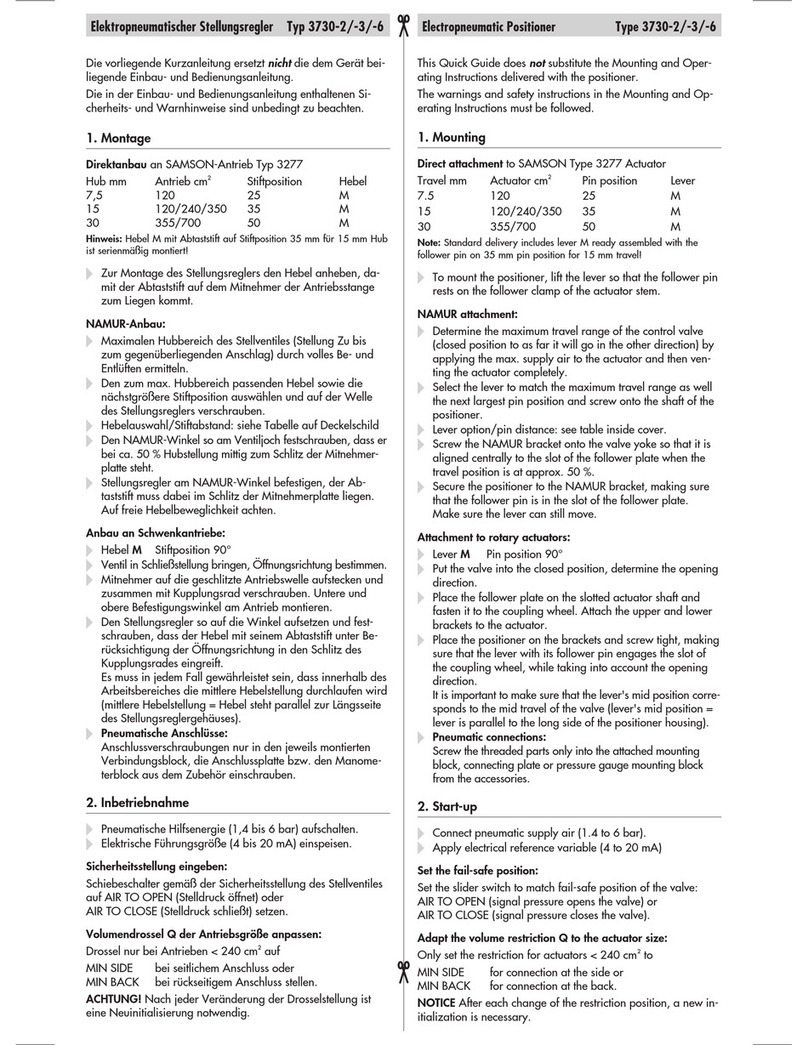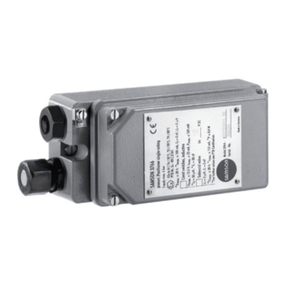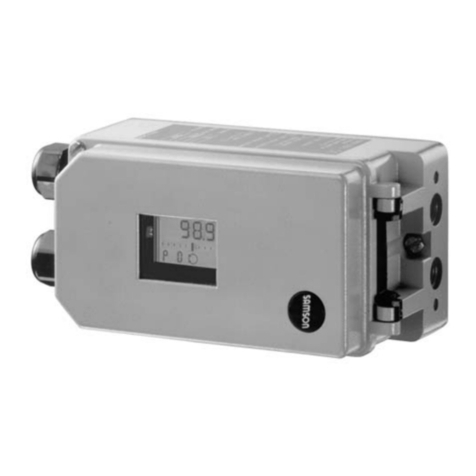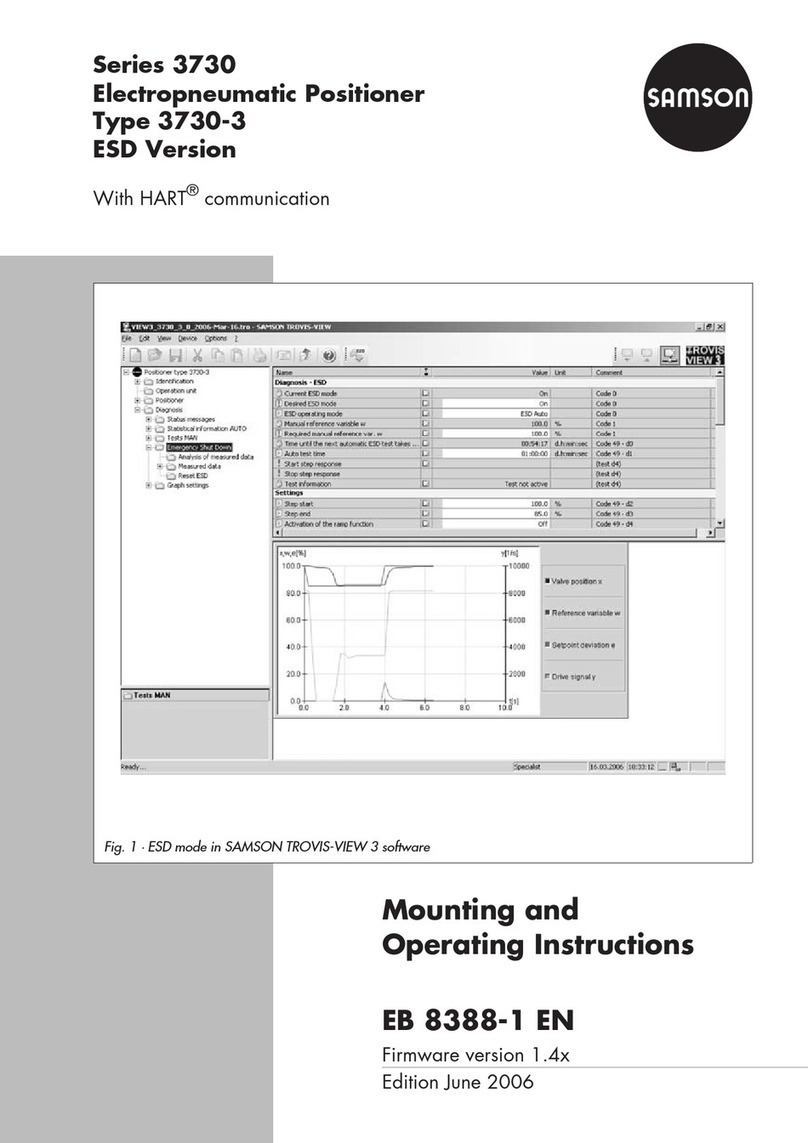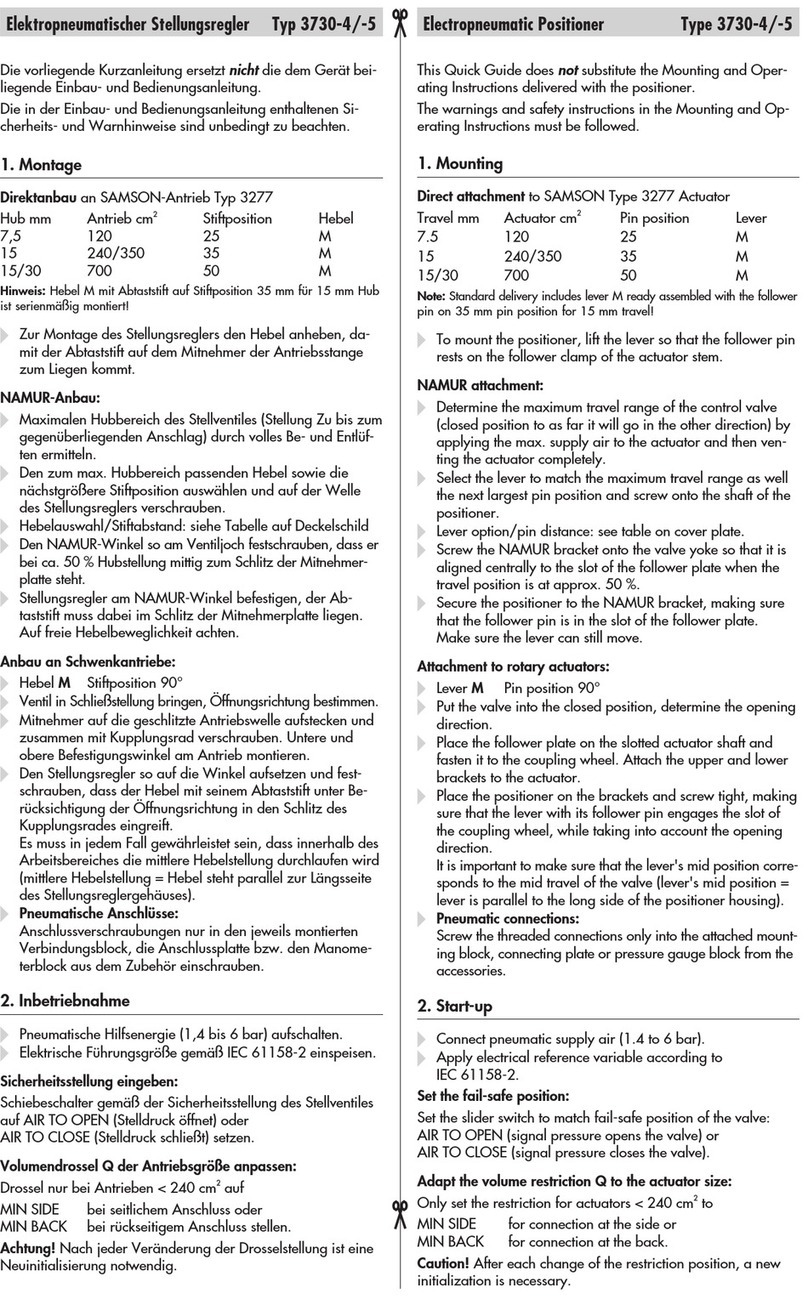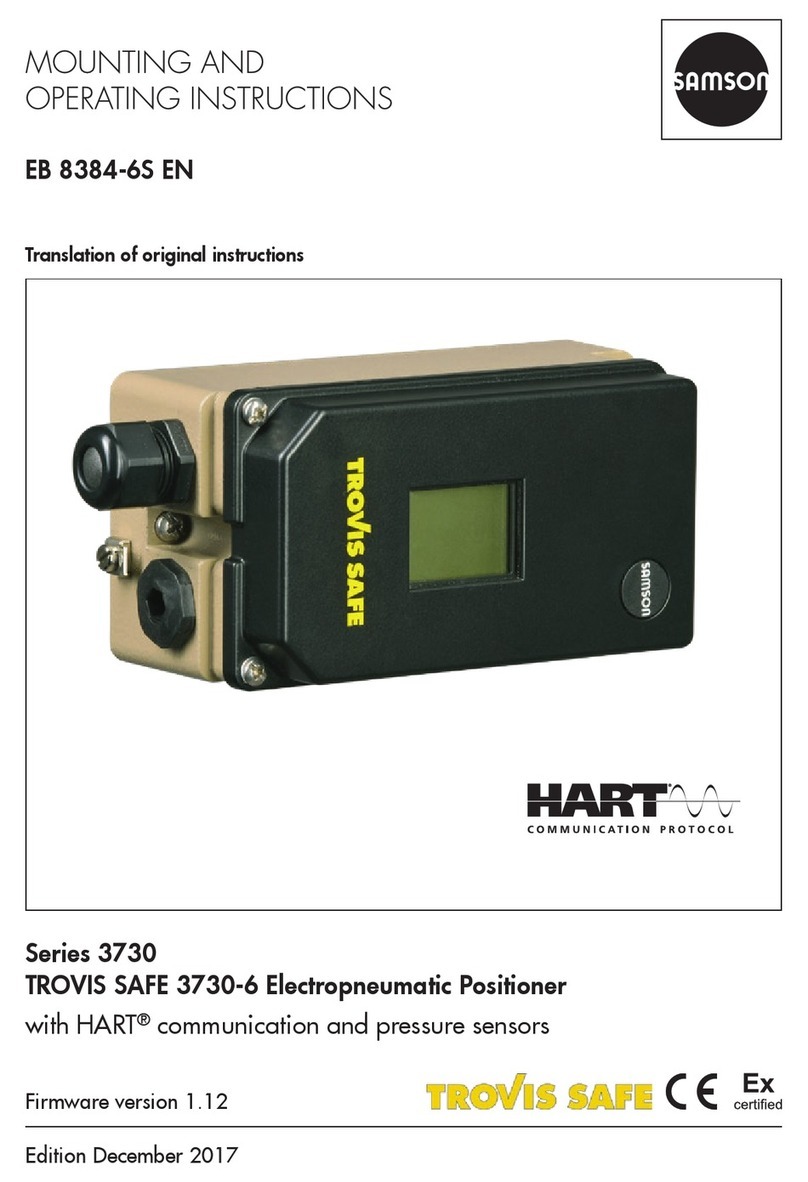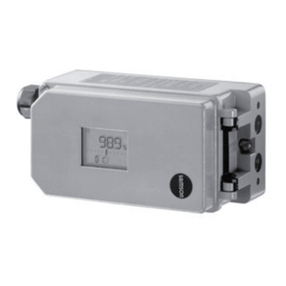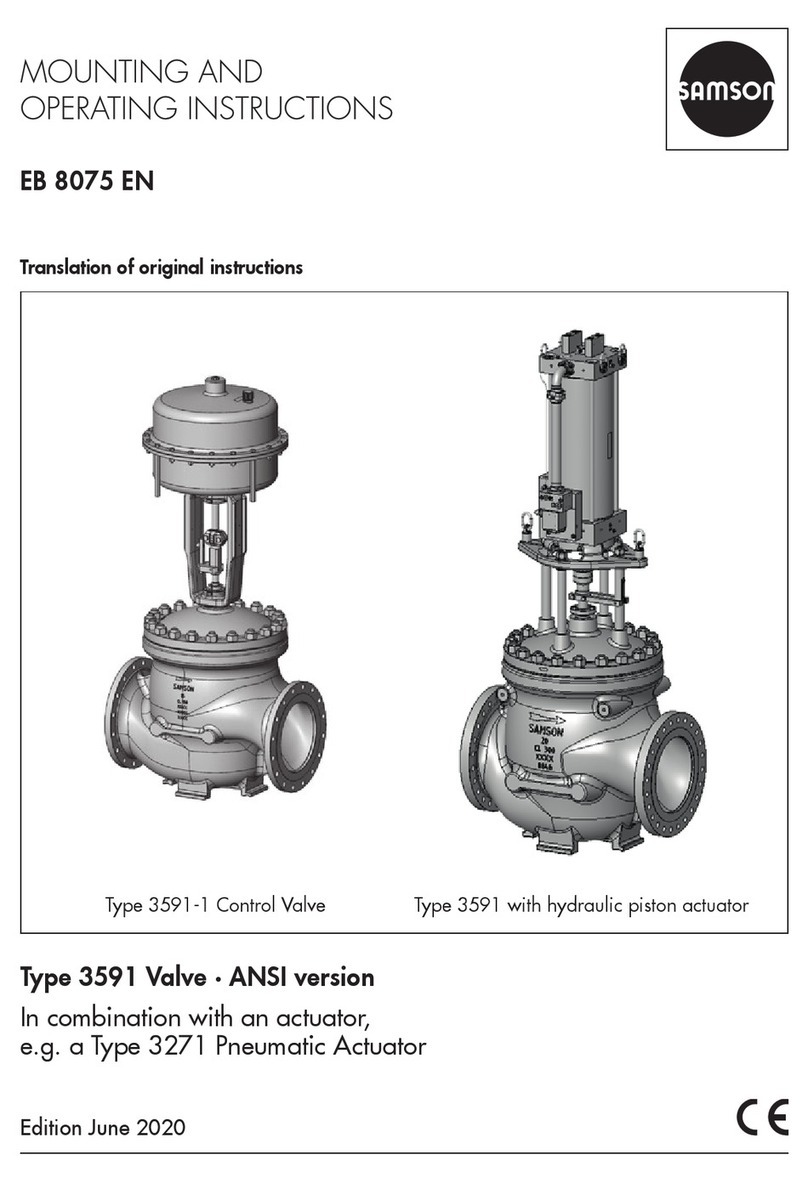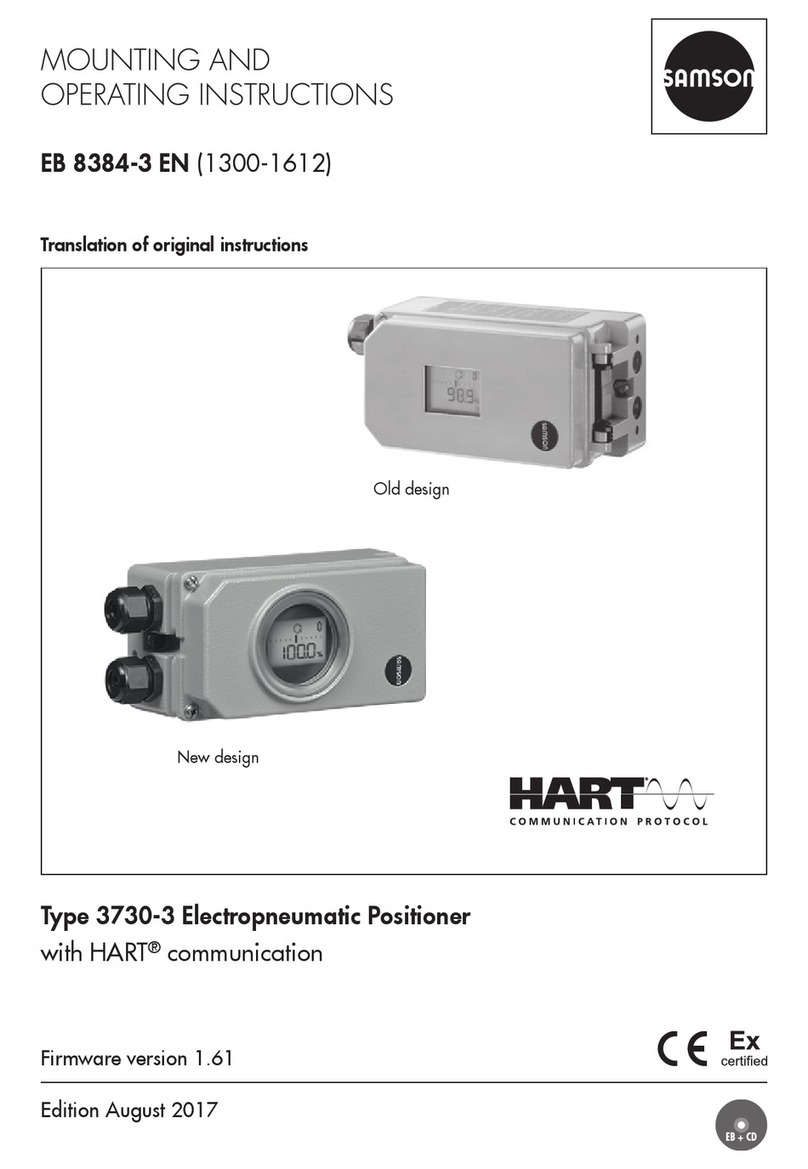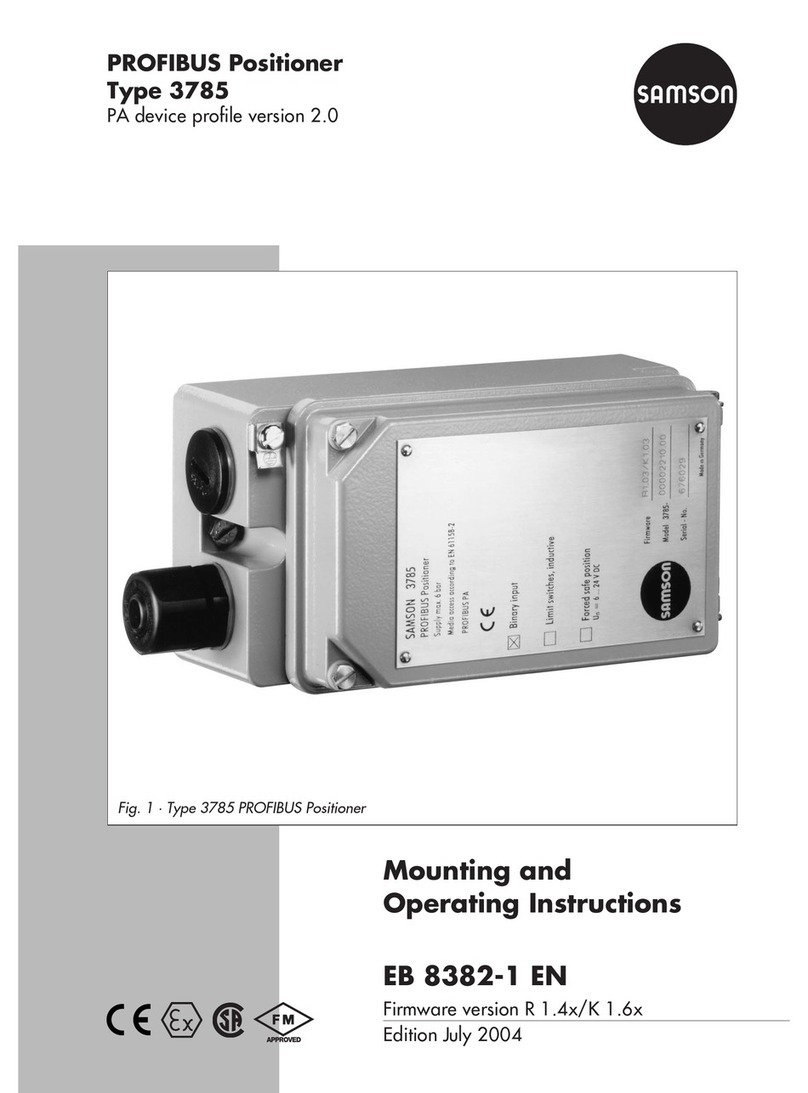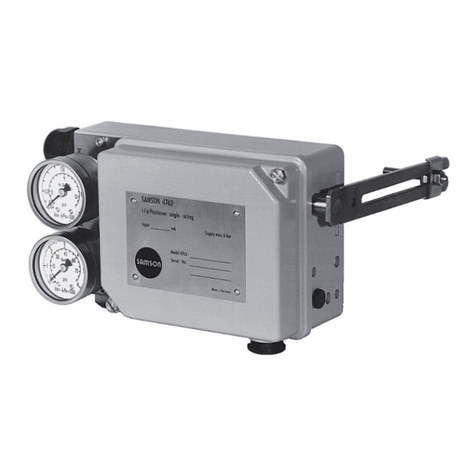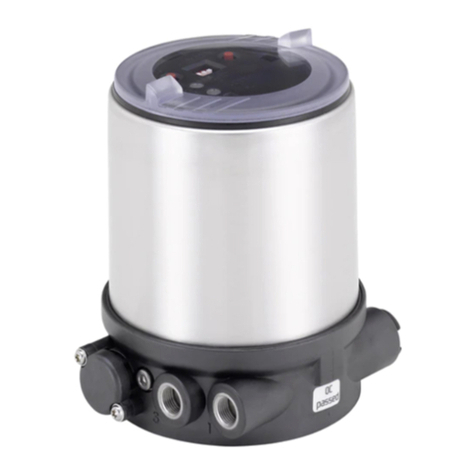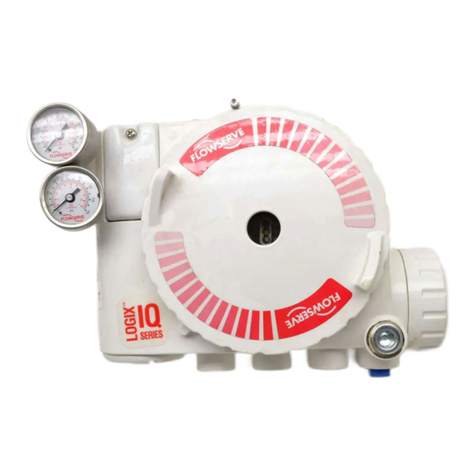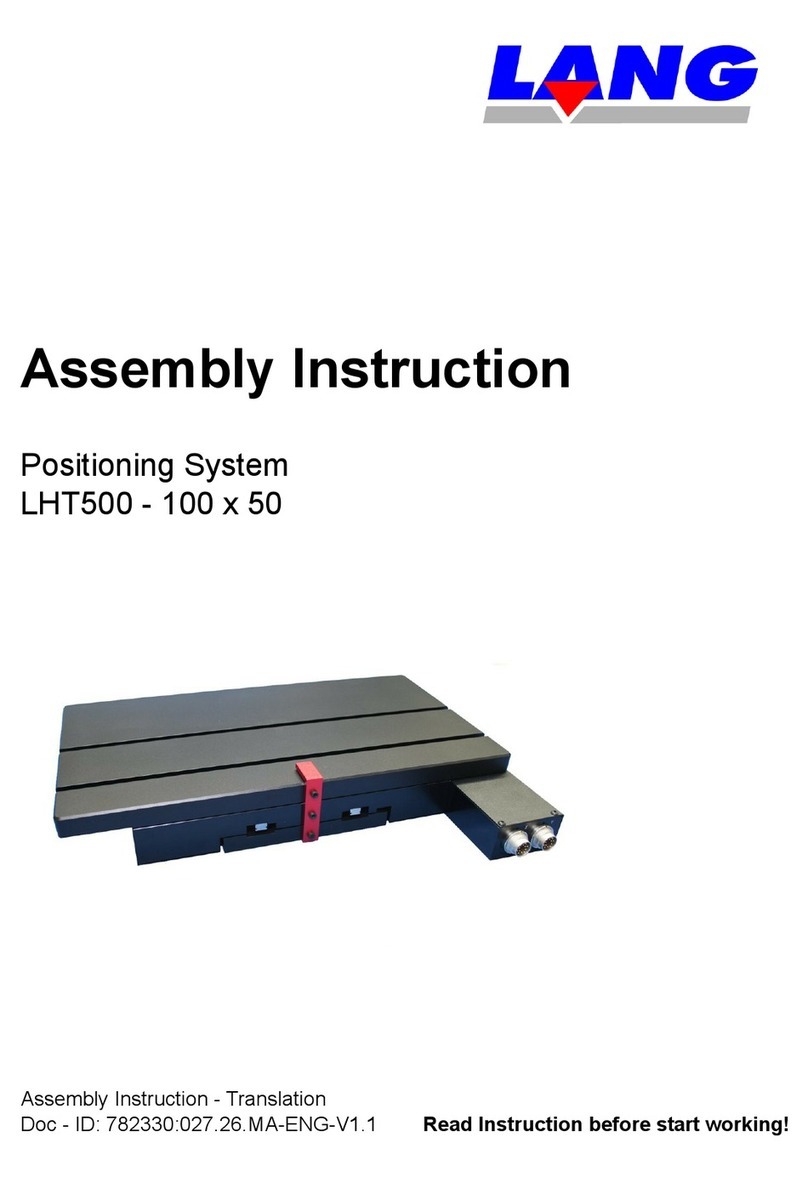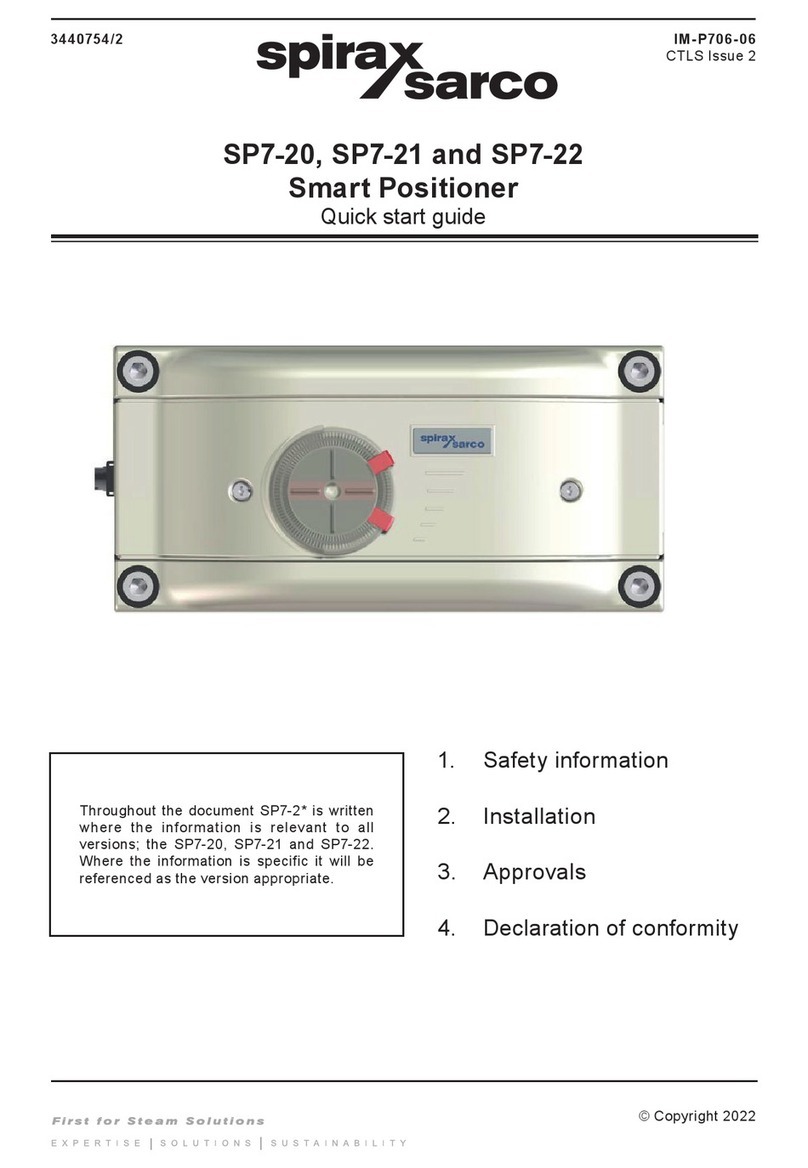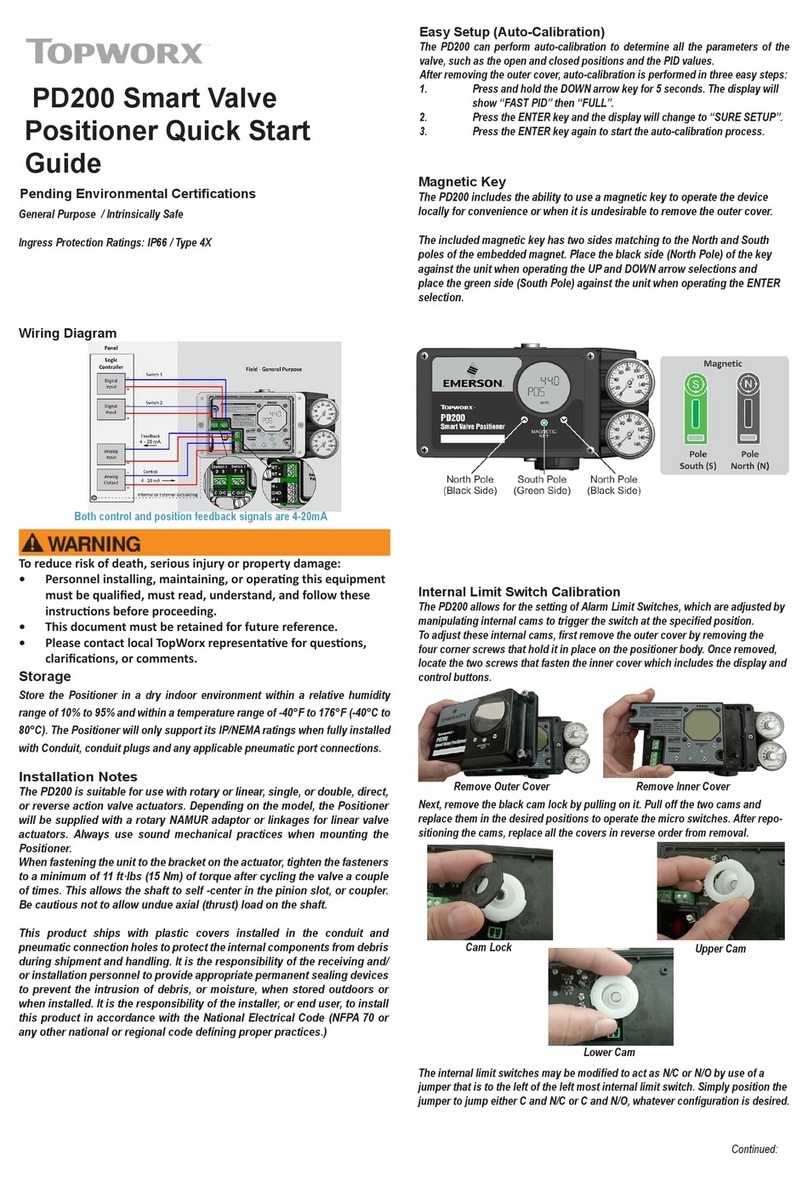1 Design and principle of oper-
ation
The electropneumatic positioner is mounted
to pneumatic control valves and is used to
assign the valve position (controlled vari-
able x) to the control signal (reference vari-
able w). The DC control signal received from
a control unit is compared to the travel or
rotational angle of the control valve and is-
sues a signal pressure (output variable y).
The positioner is designed depending on the
corresponding accessories for direct attach-
ment to Type 3277 Actuators or for attach-
ment to actuators according to IEC 60534-6
(NAMUR).
Additionally, a coupling wheel included in
the accessories is required to transfer the ro-
tary motion for rotary actuators according to
VDI/VDE 3845.
Springless rotary actuators require an ac-
cessory reversing amplifier to permit the
powered operation in either direction.
The positioner basically consists of a travel
sensor system that functions proportional to
the resistance, an analog i/p module with
downstream booster as well as the electronic
unit with a microcontroller.
The positioner is fitted with three binary con-
tacts as standard: A fault alarm output is
used to indicate a fault to the control station;
two configurable software limit switches in-
dicate the valve’s end positions.
The position of the valve is transmitted as
linear travel motion or angle of rotation via
pick-up lever and travel sensor (2) to an an-
alog PD controller (3). Simultaneously, an
A/D converter (4) transmits the position of
the valve to the microcontroller (5). The PD
controller compares this actual position to
the 4 to 20 mA DC control signal (reference
variable) after it has been converted by the
A/D converter (4).
In case of a system deviation, the operation
of the i/p converter (6) is changed so that
the actuator (1) is filled or vented via the
downstream air capacity booster (7). This
causes the closure member of the control
valve to move to the position determined by
the reference variable.
The pneumatic air capacity booster (7) and
the pressure regulator (8) are provided with
supply air. An intermediate flow regulator
(9) with fixed settings is used to purge the
positioner and also guarantees trouble-free
operation of the pneumatic booster. The out-
put signal pressure supplied by the booster
can be limited over the software.
The volume restriction Q (10) is used to opti-
mize the positioner by adapting it to the ac-
tuator size.
Serial Interface
The positioner is equipped with an interface
to allow the SAMSON TROVIS-VIEW Con-
figuration and Operator Interface software
to transmit data and parameters over an
adapter cable from the RS-232 interface of
a computer to the positioner. Refer to sec-
tion 13.
To detect any valve faults at an early stage,
the positioner can optionally be equipped
with EXPERT+valve diagnostics. You can ac-
cess the functions provided by EXPERT+
valve diagnostics over TROVIS-VIEW soft-
ware and over the DTM file of the device.
8EB 8384-2 EN
Design and principle of operation
